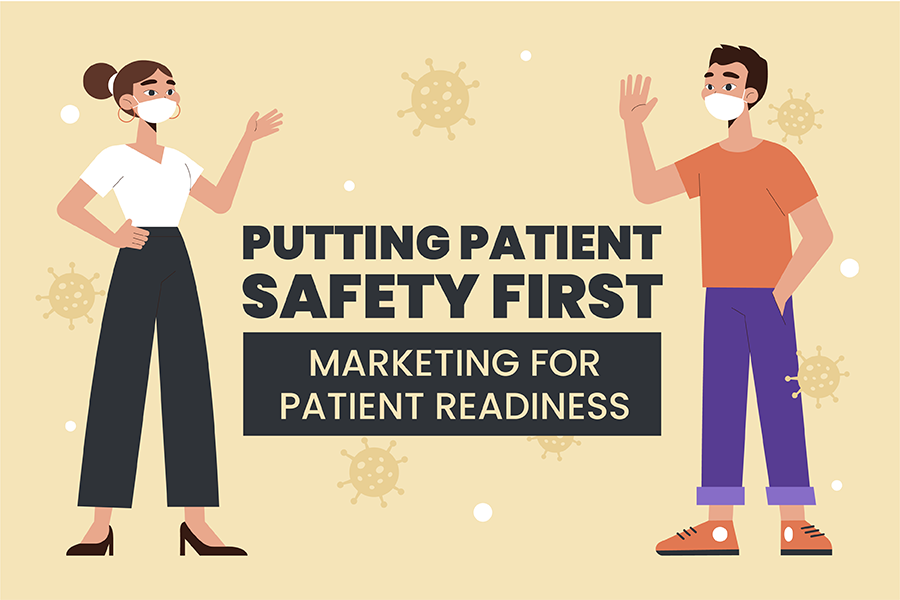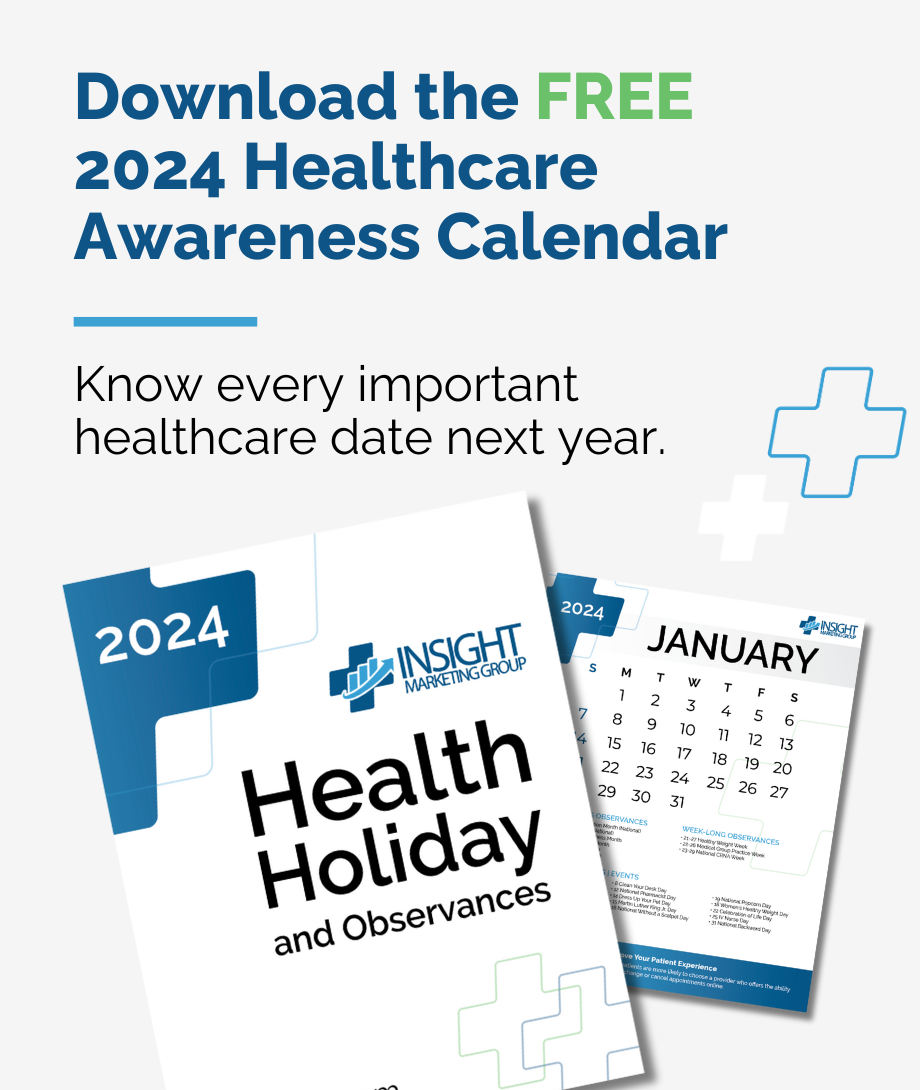 Why are patients deferring care during COVID?
Why are patients deferring care during COVID?- What can practices do now to market their patient readiness?
Are your patients afraid to visit your practice? The Medical Group Management Association (MGMA) reports 87% of your customers are worried about the safety of your office, and they are deferring their care until COVID-19 gets under control.
Most practices experienced a patient volume roller coaster during COVID-19. Nationally, practice volumes decreased by 60% early on during the pandemic. We saw some rebounds in clinical encounters over the summer. Yet as COVID case numbers crept back up in the early winter months, we saw a corresponding decline in patient volumes for elective care.
The American Academy of Family Physicians (AAFP) says, “Practices are unlikely to return to normal volumes for some time as patients continue to avoid the office.” While many providers are leveraging telemedicine appointments, most are still experiencing a substantial hit on their bottom line.
It is important to recognize that clinical practices do not have to be the victims of the fear surrounding COVID-19. There are some things you can do right now to help your practice regain control over each stage of the COVID-19 crisis and its impact on your patients. Low-cost but high-impact marketing communications can create a climate of patient readiness, safety preparedness, and engagement.
Why Are Patients Deferring Care During COVID?

The first step toward developing a patient readiness communication strategy for your practice is to understand what concerns are motivating your customers to delay care.
MGMA’s polling data cited patient safety as the primary concern for delaying care this summer. Nearly 90% of those surveyed mentioned the risk of COVID-19. The remaining respondents mentioned:
- Job loss or loss of insurance coverage
- Elective surgery bans during the pandemic
- Unwillingness to comply with COVID safety requirements (i.e. mask wearing)
- Visitor restrictions in the clinical setting
There remains extensive anxiety around possible coronavirus contamination. The New York Times reported on a gravely ill patient who turned down a potentially life-saving liver transplant due to fears of dying alone in the ICU from COVID-19. The New England Journal of Medicine reported Kaiser Permanente’s near 50% drop in heart attack admissions in Northern California. The news and social media fueled the panic, leading to dangerous decision-making such as skipping mammograms, colonoscopies and other types of life-saving preventative care.
This has led many healthcare institutions to focus strongly on marketing toward patient readiness and safety during COVID-19. The CEO of 14-hospital Jefferson Health stated, “Our goal is to spend almost all of our marketing dollars over the next year around the safety of our institution.” The CMO of Advocate Aurora Health in Illinois stated in Becker’s Hospital Review, “We’ve sought to develop practical, informative content that is driven by the needs, questions and fears of the consumers and communities we serve.”
However, where does that leave smaller independent practice networks in their efforts to communicate the promise of safe care to patients? These organizations lack the extensive budgets of their hospital-owned ambulatory competitors yet are struggling to assuage the same kinds of patient fears.
Free Healthcare Awareness 2024 Calendar
Nearly every month of the year has a health holiday or observance, and there are also a number of awareness months that your patients and staff would love to know about. You also don’t want to miss chances to celebrate with your practice’s followers.
Free Healthcare Awareness 2023 Calendar
Nearly every month of the year has a health holiday or observance, and there are also a number of awareness months that your patients and staff would love to know about. You also don’t want to miss chances to celebrate with your practice’s followers.
What Can Practices Do Now to Market Their Patient Readiness?
 While your patients may be afraid to come to your practice now, it’s important to recognize that before all this COVID panic started, clinical teams remained among the most trusted in any professional field. A Gallup study in 2019 showed that 85% of Americans rated nurses as having high levels of ethics and honesty. These findings weren’t new, either; Gallup had 18 years of consistent polling data showing nurses, doctors, pharmacists, dentists, and psychiatrists remain top of the list for honesty and integrity in the minds of most consumers.
While your patients may be afraid to come to your practice now, it’s important to recognize that before all this COVID panic started, clinical teams remained among the most trusted in any professional field. A Gallup study in 2019 showed that 85% of Americans rated nurses as having high levels of ethics and honesty. These findings weren’t new, either; Gallup had 18 years of consistent polling data showing nurses, doctors, pharmacists, dentists, and psychiatrists remain top of the list for honesty and integrity in the minds of most consumers.
Medical practices seeking ways to market their patient readiness can capitalize on this trend when communicating with their patients and the community they serve.
Patient readiness during COVID-19 requires you to communicate a message of safety in an authentic and meaningful way that matters to your patient. However, you can do this in myriad ways that are effective both from a cost and patient engagement perspective.
Start with your practice website. Place a brightly colored banner at the top that immediately gets the attention of patients. Take the most important questions you repeatedly hear from patients and answer them in an FAQ:
- What are you doing right now to keep your patients safe?
- Do patients have to come to the office for their appointment or do you have telemedicine protocols in place?
- Do office visitors have to wear masks?
- What are the signs of COVID and what should the patient do if they have symptoms?
Create a simple smartphone video to communicate the changes made to your clinical space including the typical experience of a patient in your practice. Place this video on your website and share it in social media channels.
Define in advance how your messaging will emphasize social distancing, mask-wearing, and cleanliness as a standard part of COVID-19 protocols. If your practice has a just-in-time patient rooming system, train your frontline office staff in how to communicate these changes to patients.
Also consider how your messaging will change by audience, including:
- Patients
- Healthcare decision makers (who may or may not be the patients)
- Employees
- Vendors
- Referral partners
- Everyone else
Practices that focus on answering the hot button questions of the moment can create their own opportunities to build trust and a sense of safety in their patients. For example, early in the pandemic, patients were concerned about losing their sense of smell and taste. This created a social media and content opportunity for ENTs to answer common questions from their patients. Give consideration to the kinds of questions your patients will ask during cold and flu season, such as, “Can I get COVID and the flu at the same time?” These hot button issues will create new opportunities to engage patients in ways that can be low production and cost but high value to your customers.
Medical practices that focus on communicating safety protocols and preparing their patients for what to expect when visiting their facilities will not fall victim to the 87% of patients who are too fearful of COVID-19 to seek the medical treatment that they need.
